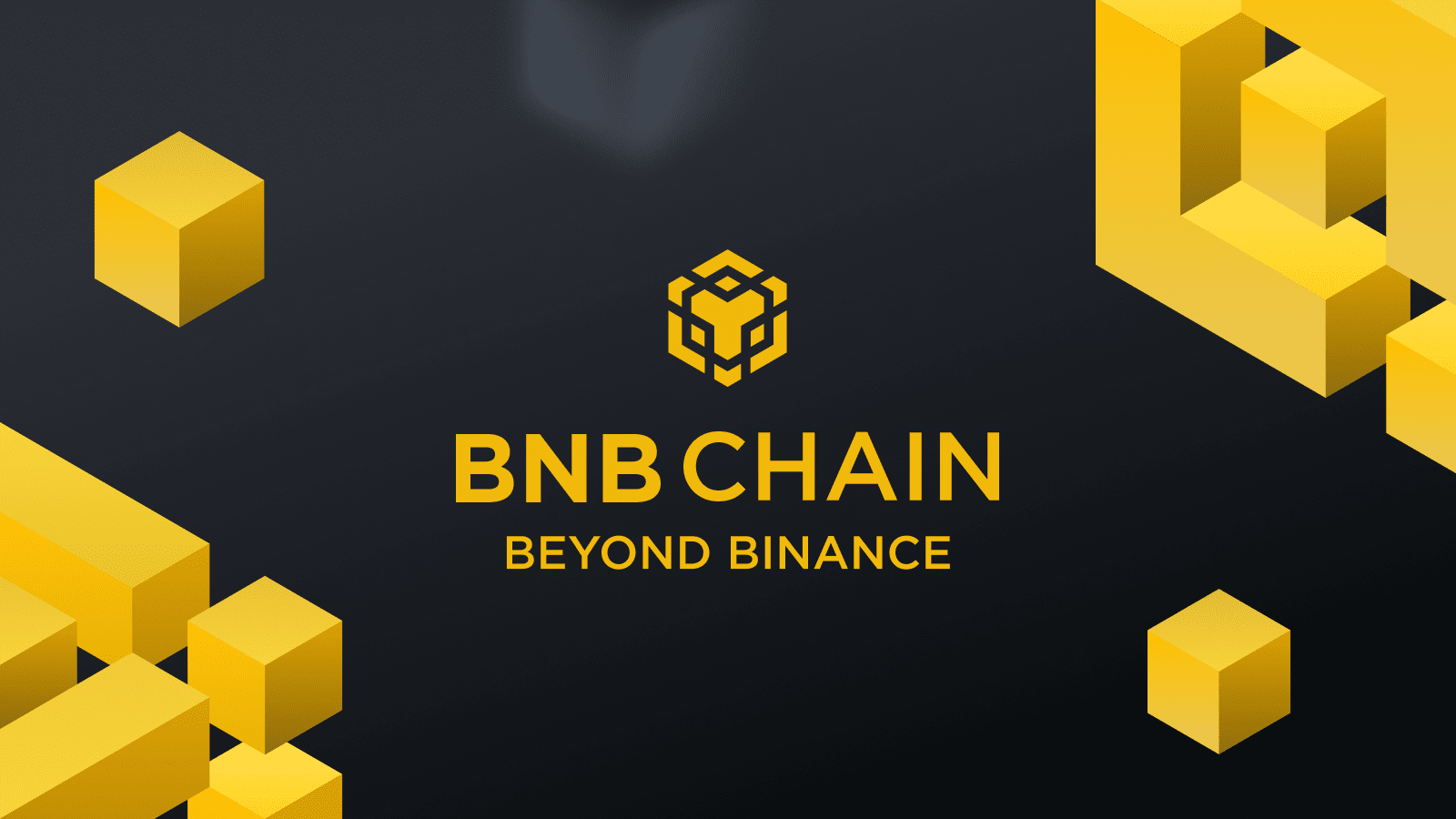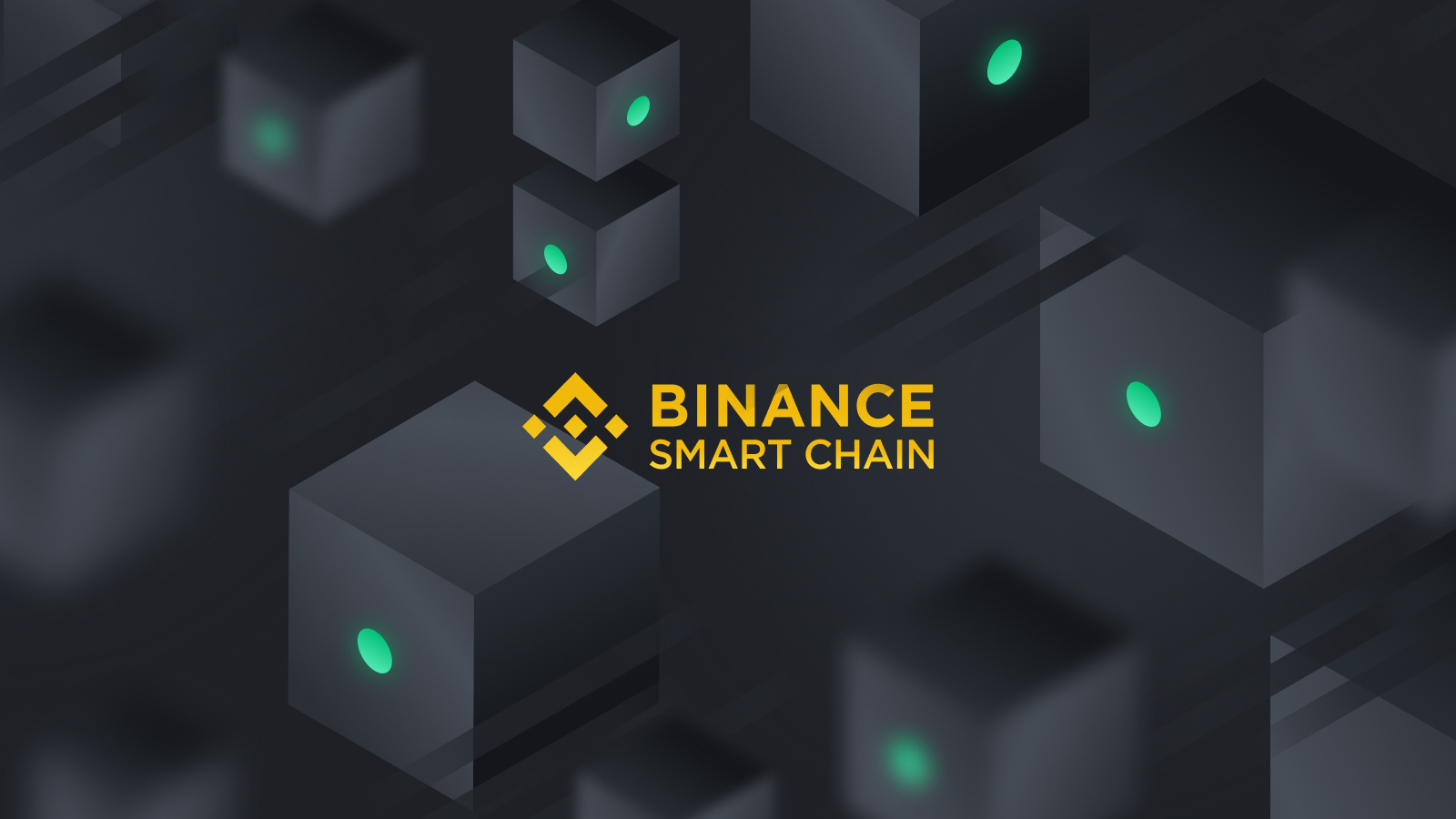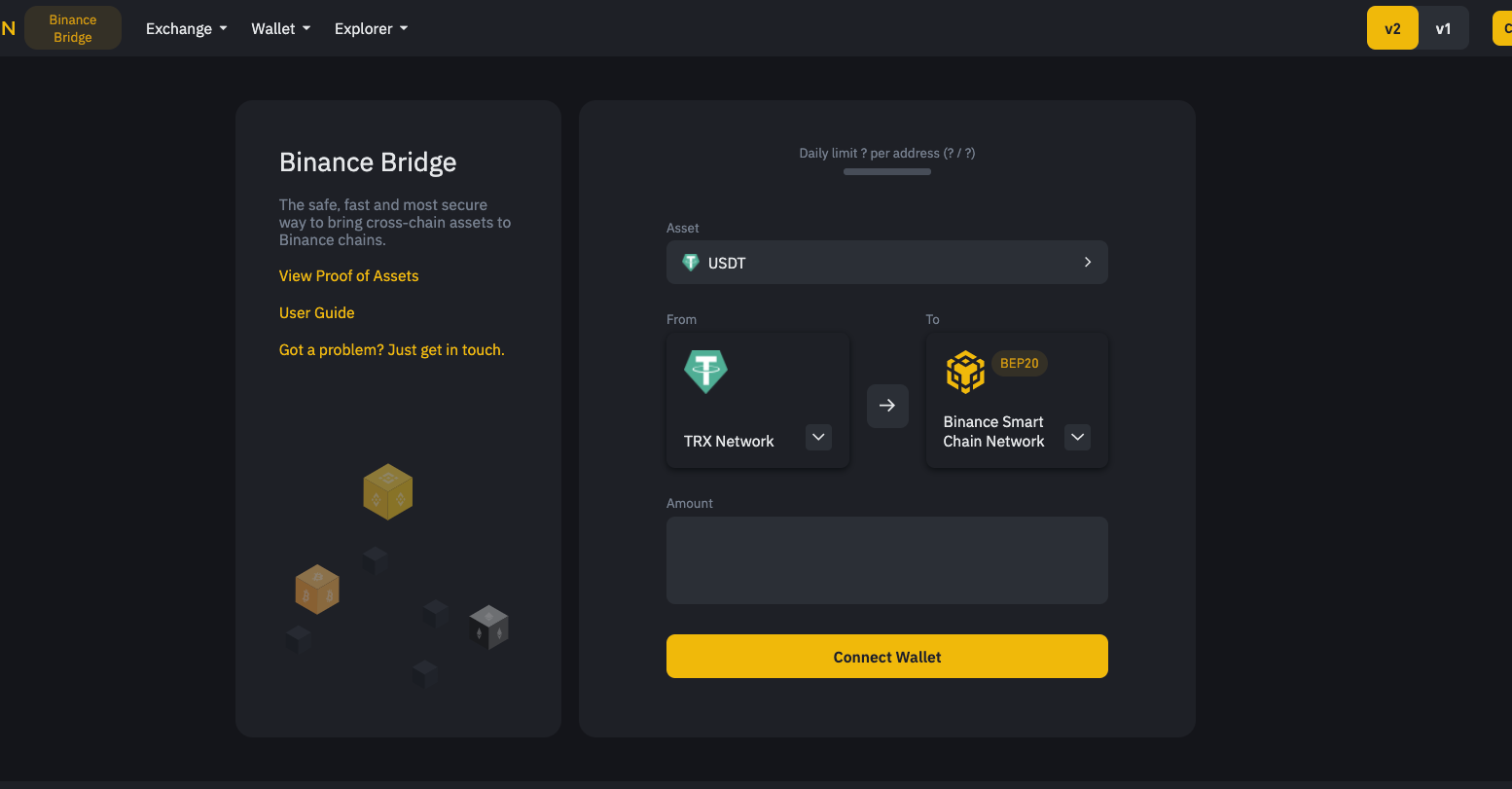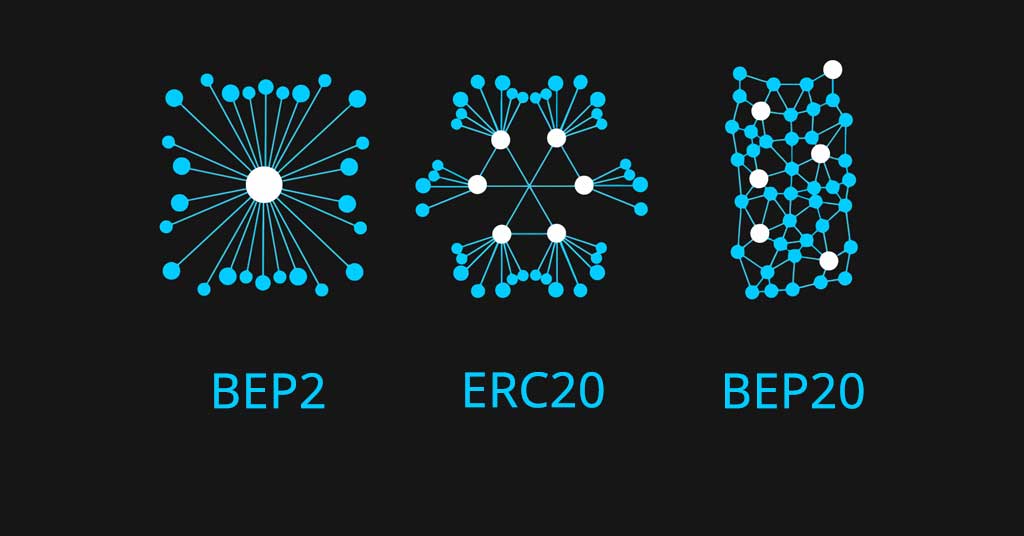share
Crypto powerhouse Binance has gone beyond exchange services, innovating in blockchain tech with Binance Smart Chain (BSC) and Binance Chain (BC), as well as in-house BNB Tokens. BSC fuels dApp BEP2 coins like homegrown BNB, which are a vital part of Binance’s play, while BEP20 spins up on BSC.
Binance’s Networks and Their Native Token Standards
Meet Binance Chain and Binance Smart Chain – two game-changing, lightning-fast blockchain powerhouses cooked up in the Binance kitchen.

BNB Chain (Binance Chain/BC) hit the ground running in April 2019, revving its digital engines for hyperspeed crypto trades. This platform is home to Binance DEX, a decentralized stock car in the crypto race, known for its speed and safety when it comes to dealing in Binance Coin (BNB) and other BEP-2 tokens. Although it’s a savant in its league, it lacked the spices of variety when it came to serving DeFi delicacies, prompting the inception of its sibling blockchain network, BNB Smart Chain.

Enter BNB Smart Chain (Binance Smart Chain/BSC), took its first breath in September 2020. It’s blessed with a brain for smart contracts, building on the tricks its older sibling taught while shaking hands with the Ethereum Virtual Machine. The invitation to the smart contract party opened the doors wide for developers, prompting them to whip up and dish out sizzling decentralized apps (DApps) on the blockchain buffet. Fuelling the ride is the ever-flexible, DeFi-ready BEP20 token standard. As a result, Binance Smart Chain became a hotspot for a whole range of captivating DeFi feats. High transaction costs on Ethereum led to droves of users switching to Binance Smart Chain, the equally competent but lighter-on-the-pocket starlet.
The lowdown on BEP-2
BEP-2, living in the BNB Chain world, brings swift, speedy transactions to the table. Its one-second block time, lightning-like trades, and brisk confirmations make BEP-2 a star player for fast-paced doings like big exchanges or token handouts.
But what puts the wind in BEP-2’s sails is Binance’s unique consensus-building blocks. Instead of the whole crowd agreeing to a transaction, only a select group has the power to greenlight it. It’s quicker but trades a bit of freedom for speed.
Binance Bridge: The Link to Other Lands
The Binance Bridge is the answer to mingling with different blockchain cliques.

It clones assets and sends the identical twin to the desired network. To do this, it requires your wallet address to verify the transaction. So, BEP-2 can hang out with other blockchain buddies, swap Bitcoin for BEP2 Bitcoin, and then play around in the Binance universe.
BEP-2 Tricks: Trading, Fee Payments, & Prize Staking
BEP-2 tokens aren’t just pretty faces; they do some heavy lifting in the Binance world. Binance Coin (BNB), the homegrown BEP-2, is a multitasker. Pay your Binance trading fees with it and get a sweet discount. Hold and use BNB, and you’ll pump up demand.
On top of that, you can stake BNB, reaping the rewards for helping validate transactions and keep things secure. Your BEP-2 tokens might not just sit there but earn their keep.
BEP-2 Limitations: No Smart Contract Party
BEP-2’s got a thorn, though – no smart contract smarts This missing prowess hampers savvy applications like DeFi.
The solution? Binance pulled an ace from their sleeve – Binance Smart Chain (BSC) and BEP-20 tokens.
What about BEP-20?
BEP20 takes the baton from its predecessor, BEP2, injecting new power into developers’ hands-on Binance Smart Chain (BSC). Its standout feature – the ability to stake or lock tokens directly on the chain.
Developers can now set up smart contracts that snap up tokens from holders, rewarding them over time. This nifty trick is at play in Pancake Swap. This leading BSC-based exchange lets users stake their CAKE tokens right on the platform and reap revenue-based rewards.
Smooth Sailing with ERC-20 Tokens
Ethereum’s beloved ERC-20 tokens get along like a house on fire with BEP20. This bromance simplifies hopping from Ethereum over to BSC and back. 1inch and SushiSwap are shining examples, crossing their ERC-20 tokens over to BSC, employing the BEP20 standard, bypassing the need for new token blueprints, and smoothing the way for their user base.
High-Flying DeFi Apps and Advanced Token Features
BEP20 tokens have broken big in the Decentralized Finance (DeFi) scene thanks to their versatility and added muscle. They’ve become the lifeblood of various DeFi apps, from yield farming platforms to decentralized exchanges and lending schemes.
Venus, a lending and borrowing marketplace built on BSC, showcases BEP20’s power with its native token, XVS. Plus, BEP20 lets developers come up with one-of-a-kind tokens – from coins that shrink with each transaction to tokens that dole out transaction-based perks to their holders.
Potential Hurdles – Extra Hassle for Developers
BEP20, for all its benefits, can feel a bit of a head-scratcher compared to its straightforward predecessor, BEP2. These fresh functions mean more hoops for developers to jump through.
For example, BEP2 simply issues tokens on the Binance Chain without smart contract complexities. But with BEP20, it’s all about wrestling with intricate code, especially for those keen on maxing out on DeFi goodies like yield farming or staking.
For newbie developers on BSC or for those switching from BEP2 to BEP20, it can make for a tricky learning curve. Even though the bolstered features can give rise to cutting-edge apps, they need more know-how, stacking up a level of complexity untamed with the simpler BEP2 standard.
BEP-2 vs. BEP-20: Who Wins the Race?
BEP-2 is like a swift, precision-tuned Grand Prix race car. The entire design is about quickness. Flash trades, instantaneous confirmations, and immediate token handovers all embody its need for speed. But, analogous to a race track’s smooth pavement and strategically placed safety measures, the high speed sacrifices the bumpy road of a fully decentralized system.

Switch gears and in roars, BEP-20, equipped more like a beastly rally car, built for complex corners, dirt-drifting, and hill-flying madness. This token standard is optimized not just for speed but for versatility.

BEP-20 revs up the experience from the BEP-2 starting line and powers up through the mud and over rutted hills – those added smart contract smarts that BEP-2 lacks. This intricate engineering is a triumph for digital mechanics, allowing them to customize reward systems in line with their respective smart contracts.
However, navigating BEP-20’s track can take some skill – the technical jargon can be perplexing, and mastering its code is a challenging, wind-in-your-face race. The twists, the turns, the chances of a wipeout… the difficulty level certainly dials up.
Safety Considerations
Safety always takes center stage in cryptocurrency transactions, and this is where BEP-20 kicks up the notches. Its support for smart contracts allows for more secure and trustless transactions. However, this comes with a cost. The added complexity of coding for BEP-20 does bring in a more substantial margin for error, which can lead to loopholes and vulnerabilities if not properly addressed.
BEP-2, on the other hand, offers a simpler and more straightforward transaction process. This minimizes the chances of errors occurring at the coding level, but it comes at the expense of a lower overall security ceiling when compared to BEP-20.
Interoperability
BEP-2 and BEP-20 both introduce rich layers of interoperability. BEP-2’s talent for asset creation and swapping across networks boosts the flexibility and reach of the Binance ecosystem in the expanding cryptoverse. Meanwhile, BEP-20 builds a powerful bridge of compatibility with Ethereum’s ERC-20 tokens, securing Binance Smart Chain’s role as a heavyweight in the DeFi ring.
Scalability
Scalability is a system’s capacity to grow its scale or throughput while maintaining its efficiency. In this regard, BEP-2 excels. Its stellar performance catering to robust loads in high-speed scenarios – illustrated by rapid trades, speedy confirmations, and nimble token handovers – speaks volumes to its scalability.
Diverging from raw speed, the scalability of BEP-20 explores a different avenue – ingenuity. Backed by smart contract integration, BEP-20 paves the way for tailor-made services to complex use cases, intricate financial products, and advanced DeFi applications. This added adaptability future-proofs BEP-20, marking it ready to address burgeoning DeFi challenges.
Transaction Fees
Ethereum demands a fuel fee (gas) for every move you make, even just moving tokens around. Shuffling 100 of Ethereum can set you back a stiff 10 to $20, drawn live from the ever-fluctuating gas price. And hey, when things get clogged, that price can skyrocket, making those Ethereum dealings a pricey affair.
Now Binance Smart Chain’s BEP-2 and BEP-20 expenses, they’re a different story – a cheaper read. Let’s say you switch $100 of BNB through BEP-2. Your wallet’s only likely to shrink by around 0.01 BNB – as of November 2023, we’re talking a modest 60 to 70 cents, give or take, based on BNB’s current standing. Even BEP-20, notorious for pricier transactions than BEP-2, is still a steal compared to Ethereum – parting ways with just a few cents to a couple of bucks.
Where Devs Hang Out
BEP-2 is like the big town square where programmers worldwide come together. And it’s a busy place, with a wealth of projects, cross-linkages, and handy wallet tie-ins. Picture this: by 2023, over 1,200 projects and more than 30 wallets, including crowd favorites like Trust Wallet and Ledger, are on board.
BEP-20, though, brings the magic of smart contracts to the party, becoming an instant hit amongst DeFi developers. Sure, it came out later, and it’s got its complications, but don’t let that fool you. In just two runs around the sun, it rallied support from around 3,000 projects and got 35 wallets to join the game. Might not sound like much standing next to BEP-2, but given the circumstances, that’s pretty darn good!
Heavy-hitting BEP20 Dapps
PancakeSwap: Taking full advantage of Binance Smart Chain’s rapid and cost-efficient BEP20 tokens, PancakeSwap offers a lightning-fast platform for smooth token interaction.
Venus: Venus revolutionizes lending and borrowing through radical decentralization and the use of BEP20, creating a swift, compatible Binance Smart Chain protocol that outperforms rivals.
Beefy Finance: Flipping yield farming dynamics, Beefy Finance accelerates returns with auto-compounding, supporting various BEP20 tokens and offering high return rates.
BakerySwap: Leveraging BEP20’s efficiency, BakerySwap offers fast, cost-effective transactions and diverse investment strategies on Binance’s Smart Chain, including NFT trading.
Autofarm: Utilizing the BEP20 standard, Autofarm opens up numerous yield farming opportunities across Binance Smart Chain projects, with automatic staking and unstaking for added profit.
burgerSwap: burgerSwap facilitates quick BEP20 transactions and fosters democratic governance through voting rights to its BEP20 token holders on the Binance Smart Chain.
1inch: Despite its multi-chain nature, 1inch champions BEP20 support, sourcing excellent deals across various DEXes.
Top Picks for BEP2-Ready Wallets
BEP2 tokens. They’re cool. They’re trendy. But not all wallets can handle them – they need the BNB Beacon Chain to cruise. Bummer, right? Yet, some wallets break that norm. They can vibe with BEP2 tokens and even their BEP20 cousins.
Riding the BEP2 Wave:
- Binance Chain Wallet: Binance says it’s the real deal for its Smart Chain, Chain, and Ethereum. Hold on, it’s also in at ease with BEP2, BEP20, and ERC-20 tokens. And hey, it’s got a sleek mobile app. Totally rad.
- D’CENT Wallet: This wallet’s more than just a pretty interface. It goes all-in with biometric hardware, desktop and mobile versions, and a cool credit card-style wallet that you can ‘tap to verify’. It’s also chummy with Bitcoin, ETH, RSK Smart Bitcoin, Klatyn- you name it.
- Trust Wallet: Trust is in vogue, with a desktop and mobile app hanging out with over 4.5 million tokens. Bonus: you can swap BEP2s for BEP20s, good to roll on BNB Smart Chain and Ethereum blockchains.
- SafePal S1: This hardware titan is your fortress. Its secret? Total offline operation. Internet? Nada. Wi-Fi, Bluetooth, radio signals? Zip. Result: your keys are at maximum security. Plus, it’s friends with BEP2s, BNB Coins, and over 1000 coins and tokens.
- Ellipal Titan: Think big: a ‘big-screen’ hardware wallet with Android and iOS compatibility. Think security: QR activation codes, no Wi-Fi or Bluetooth syncing. It even has a fail-safe: a self-destruct feature against physical tampering. But don’t sweat, your funds are safe with your seed recovery phrase.
When it comes to BEP20 tokens, guess what? They’re pretty social with wallets like Metamask, a popular ERC-20 connector.

Hangout Spots for BEP20 Tokens
Apart from the BEP2 clique, BEP20s have their own favorite spots, though some of them aren’t into BEP2:
- MetaMask: 30 million users can’t be wrong, right? MetaMask has its tentacles in BNB Smart Chain and several Ethereum Layer-2s, but it’s got its downsides: no Bitcoin storage or decent customer service
- Ledger Nano X: Super popular, ultra-compatible, and Linux-friendly. Runs with XRP, Monero, and over 1800 others, including BEP-20 and Ethereum ERC-20.
- Math Wallet: Big-time player, in sync with 50+ blockchains from Bitcoin to Solana and over 3000 tokens. A real universal traveler.

So, who wins the race?
In a nutshell, while BEP-2 and BEP-20 are top-notch machines born out of the same mechanical powerhouse, they are designed for distinct terrains, fuel different purposes, and offer unique experiences. Picking between them is not about labeling one as superior but understanding which route aligns better with your skills, your passions, and your destination. Their inimitable craftsmanship ensures that no matter which one you choose, you’re bound for an extraordinary ride.









